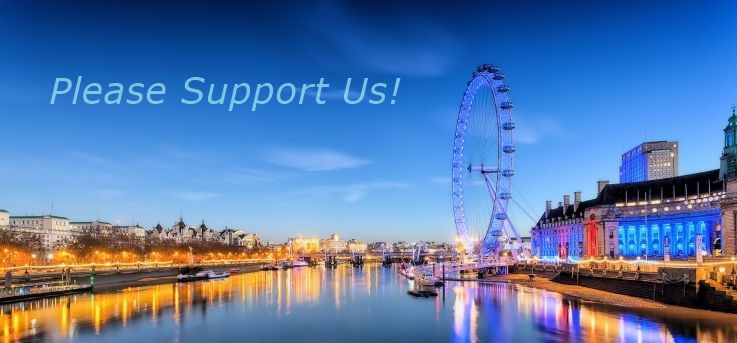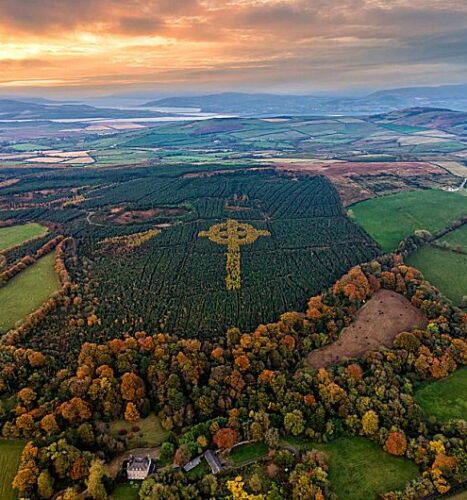What celtic languages are spoken on the british isles
What celtic languages are spoken on the british isles
What are the Celtic Languages?
The Celtic languages are a group of languages in the Indo-European family. The Germanic group, which contains Norse, Swedish, Dutch, German and English, is another branch of the Indo-European (I. E.) family tree, while the Romance group, (now often called Italic) which includes the languages Latin, Portuguese, Spanish, French, Italian French, and Romanian, is a third branch of the I.E. tree. I’m not really comfortable in identifying a group of peoples or cultures as Celtic in a historic sense, because, for instance, we do not know what language(s) the Neolithic peoples of Britain and Ireland spoke, though we know that they have descendants still in those islands. What we do know is what is and is not Celtic linguistically speaking.
The Celtic family of languages is divided into two branches, the Insular Celtic languages, and the Continental Celtic languages. The Continental branch includes the languages Gaulish, Celtiberian, and Lepontic. These were languages spoken on the European continent. There are no living native speakers left today; they all died over a thousand years ago. But we do have lots of inscriptions, on stone, wood, and especially, metal tablets. Scholars have used their knowledge of the other Celtic languages, and of Greek and Latin, in order to make very educated guesses about inscriptions. Sometimes the same inscription is presented in Latin or Greek as well as in one of the Continental Celtic languages. We now know quite a bit about the various Continental languages, and are learning more as more inscriptions are discovered, transcribed, deciphered and translated.
The Insular Celtic languages are mostly those spoken on the islands of Britain, Ireland, Man, and part of France. The Insular languages belong to one of two branches, the Goidelic and the Brythonic. The Goidelic languages are Irish Gaelic, Scottish Gaelic, and Manx. Manx is a form of Gaelic spoken on the Isle of Man. The last native speaker of Manx died in 1974, but many are learning the language today, and we have recordings of native speakers. Irish and Scottish Gaelic are both still used by native speakers. In addition to living native speakers in Ireland and Scotland, there are also native Scottish Gaelic speakers in Nova Scotia, Canada. We also have many medieval Irish manuscripts, containing Ireland’s national epic the Táin Bó Cuailnge and other Irish myths, poetry and lore, and a few medieval Scottish Gaelic mss.
The Brythonic languages form the other branch of the Insular Celtic languages. Welsh, Cornish, and Breton are Brythonic. There are still many native speakers of Welsh today, mostly in Wales. The last native speaker of Cornish died in the late eighteenth century, but there are a number of people in Cornwall and elsewhere who have attempted to learn Cornish and even rejuvenate the language. Breton is spoken in Bretagne, or Brittany, in France, by descendants of British Celts who moved there over a thousand years ago. We have fewer medieval Welsh manuscripts preserving the mabinogi and other traditional Welsh tales, poetry and lore, than we have of Irish, but Welsh literature is alive and well.
The Goidelic languages are often referred to as “Q-Celtic” because they use a “Q” sound, usually represented by a C or K, where the Brythonic or “P-Celtic” languages use P. For instance, Irish and Scottish Gaelic for “head” is ceann, or sometimes kin. Brythonic languages, P-Celtic Welsh and Cornish, use pen. There’s a place on the coast of Cornwall called Pentire, and one on the coast of Scotland called Kintyre. Both mean “head of the land.” There are hundreds of similar P and C initial word pairs that indicate the relationship between P-Celtic and Q-Celtic languages. In Celtic linguistics, it really pays to “mind your Ps and Qs.”
Английский язык. 11 класс
Конспект урока
Английский язык, 11 класс
Урок № 37. Languages of the British Isles
ЦЕЛИ И ЗАДАЧИ УРОКА:
We’ll discuss the languages of the British Isles
We’ll know the difference among the languages of the British Isles
We’ll learn some historical facts about the languages of the British Isles
We’ll use the new words in your own speech.
ГЛОССАРИЙ ПО ТЕМЕ:
ОСНОВНАЯ ЛИТЕРАТУРА ПО ТЕМЕ УРОКА
1. О.В. Афанасьева, Д. Дули, И.В. Михеева «Spotlight» («Английский в фокусе») 11 класс. Учебник для общеобразовательных организаций М.: Просвещение, 2018., p.113
ТЕОРЕТИЧЕСКИЙ МАТЕРИАЛ ДЛЯ САМОСТОЯТЕЛЬНОГО ИЗУЧЕНИЯ
There are different Indo-European languages spoken in the British Isles.
English is a Germanic language and began to develop in the 5th century AD when Anglo-Saxon tribes invaded Britain. The other languages are Celtic. They are Welsh, Irish Gaelic, Scottish Gaelic, Manx Gaelic and Cornish. During the Roman occupation and before the Anglo-Saxon invasion the historic native tongue of most of Britain was Brythonic, similar to Welsh. A direct descendant of Brythonic is Cornish – the native language of Cornwall, a region in the south-west Britain.
It’s died out as a spoken language in the 18th century but it has recently been revived and nowadays around 300 people speak it fluently. Modern Welsh is spoken by roughly 20% of the population in Wales and it’s compulsory to study it at school because it’s the official language together with English. A third of the population of Ireland overall speak Irish Gaelic and the majority of the population speak English. Scottish Gaelic was introduced from Ireland about the 6th century AD so it’s closely related to Irish. It’s spoken primarily in the Highlands and in the Western Isles. Unfortunately, the use of the language nowadays is declining. Manx Gaelic is the native language of the population of the Isle of Man. Nowadays it’s spoken by 2% as the second language.
РАЗБОР РЕШЕНИЯ ТРЕНИРОВОЧНЫХ ЗАДАНИЙ
ЗАДАНИЕ 6: Восстановление последовательности элементов горизонтальное / вертикальное
Make up the sentences from the parts:
1. were, African, see, travellers, tribe, impressed, to, the, the,
2. turned, she, tongue, fluently, that, her, is, and, speaks, it, native, it, out, French.
3. the, were, revived, surprised, animal, when, learnt, rare, scientists, they, had, that, the
4. influenced, the, of, country, invasion, parts, all, the.
1. The travellers were impressed to see the African tribe.
2. It turned out that her native tongue is French and she speaks it fluently.
3. The scientists were surprised when they learnt that the rare animal had revived.
4. The invasion influenced all parts of the country.
1.Задание проверяет знание порядка слов как в простом, так и в сложном предложении.
2.Внимательно читаете все слова в цепочке
3. Находите грамматическую основу как главного, так и придаточного предложения
4.Устанавливаете зависимость прочих членов предложения от каждой грамматической основы.
5. Если вы поняли, что имеете дело с придаточным предложением, то находите связку – наречие или союзное слово – и устанавливаете, какой тип придаточного предложения перед вами: относительное, причины, следствия или результата.
6. Соединяете все члены сложного предложения
7. Внимательно читаете полученное предложения ещё раз, помня о порядке слов и обращая особое внимание на употребление артиклей, местоимений разных групп, предлогов и союзов.
ЗАДАНИЕ 3 : Выбор элемента из выпадающего списка
Текст задания: Choose the right answer:
1. The education in the country is compulsory/descendant.
2. She speaks Italian fluently/overall as she lived there.
3. The number of the rural population has declined/related.
4. The land was uninhabited after the enemy’s overall/invasion.
5. Some Indian tribes/invaders live as their ancestors did.
6. The tradition seemed to be lost but nowadays it is reviving/dying out.
1.Задание проверяет знание ЛЕ, изученных на уроке.
2.Внимательно читаете каждое предложение, обращая внимание на то, какая часть речи требуется после слова, где вам следует сделать выбор (в случае, если на выбор даются разные части речи).
3. Вспоминаете слова и выражения, изученные на уроке
4. Выбираете слово, подходящее по смыслу и значению
5.После выполнения задания внимательно читаете полученные предложения ещё раз.
The History of Great Britain. The Celts in the British Isles (6th-3d B.C.) Part 3
Do you want to know more about the History of Great Britain? Let us continue… with the Celts

The History of Great Britain. The Celts in the British Isles. Part 3
At that time Britain was known only as a faraway land wrapped in mists and mystery. It was covered with thick forests, which grew in those parts that were not mountainous. These islands attracted many people who were moving west under the pressure of the growing population in the Continent, especially near the Rhine (what is now France and Germany).
1. The Language
The first Celts were known as the Gaels [geɪlz]. Two centuries later came the Brytons who settled in the southern lands and pushed the Gaels [geɪlz] to Wales, Scotland and Ireland and probably gave the name to the whole country. There became two dialects: the Gaelic, which was spoken in Caledinia (modern Scotland and Ireland), and the Brythonic, which was spoken in England and Wales.
2. The Celtic Clan Society
The Celts merged with the Picts and the Scots, as a result the Celtic language and the clan structure, which was typical of their society, spread over the British Isles. Clans (large family groups) were united into tribes and were the main units for farming. The Celts had brought with them new skills based on the working of iron. Before that the oak and ash woods and thickets of bushes had made it impossible to cultivate the land only with the help of stone or soft bronze axes but the introduction of the iron axe opened up new possibilities. The thick woods were cleared away and more land was cultivated.
The Celts had a patriarchal clan society based on common ownership of land. But after some time the clan and tribe chiefs started to accumulate wealth and then used their military force to rob other tribes and thus the social differentiation started to develop. Fortresses, which were tribal centres, were built on the hills and towns began to appear. The first towns were Verulamium, Camulodunum and Londinium.
3. The Celtic Warriors
The Celts were good warriors. They were famous for their war-chariots, dashing and menacing to everything in their way. The destructive force of a chariot was based on the well-trained horses, the wheels fixed with sharp knives or swords, which rotated with full speed. One man stood to drive and two others did the fighting.
4. The Druids
The Celts were pagans. Their religion was based on the worship of the Sun, the Moon, the Serpent and some other Gods and Goddesses. Their priests were called Druids. Their superior knowledge was taken for magic power and their superior dwellings filled people with a belief of some supernatural assistance in their construction. The druids held awe-inspiring vigils and terrible night rites in their open-air temples, situated in the dark woods. These rites in Sacred Groves were based on the bloody sacrifice of animals and sometimes human beings. All these rituals enhanced the Druids’ power over the masses.
5. The Celtic Culture

On the right you can see a Celtic cross made of gold. It was found in Nothern Scotland.
Celtic Languages
We are all born ignorant, but one must work hard to remain stupid. Benjamin Franklin
The most intelligent recedes. The world domination of stupidity is based on this sad truth. Marie von Ebner-Eschenbach
Creativity can solve almost any problem. The creative act, the defeat of habit by originality, overcomes everything. George Lois
Three things are needed to be happy: to be imbecile, to be selfish and to have good health. But if you miss the first, everything is over. Gustave Flaubert
Life and art are nothing but associations of ideas and sorrows that nourish our illusory quest for the Holy Grail of the human existence. Carl William Brown
Celtic Languages, subfamily of the Indo-European family of languages, a short description of their origin, of their classifications, diffusions and culture.
A society that has no respect, no regard for its bards, its historians, its storytellers, is a society in steep decline, a society that has lost its very soul and may never find its way.
Laurence Overmire
The Celt, and his cromlechs, and his pillar-stones, these will not change much – indeed, it is doubtful if anybody at all changes at any time.
William Butler Yeats
My father was a creature of the archaic world, really. He would have been entirely at home in a Gaelic hill-fort. His side of the family, and the houses I associate with his side of the family, belonged to a traditional rural Ireland.
Seamus Heaney
Broken Irish is better than clever English.
Irish saying
The Celtic belief that the souls of those whom we have lost are held captive in some inferior being, in an animal, in a plant, in some inanimate object and so effectively lost to us until the day (which to many never comes) when we happen to pass by the tree or to obtain possession of the object which forms their prison. Then they start and tremble, they call us by our name, and as soon as we have recognized their voices the spell is broken. We have delivered them: they have overcome death and return to share our life.
Marcel Proust
A voice of an angelic female singer, a memory of a good ancient time, the dreams of your dead ancestors, evocative images of a lost nature, the sound of the sea waves, the fluctuating green of the landscape, some very strange languages, an enchanted folk music, the atmosphere of an extremely touching moving ballad, something or someone somewhere very far away that you don’t know, but that you still love, in any case.
Carl William Brown
The position is: the Gaelic language is no longer the native language; it is dead, yet food is being brought to the graveyard.
Patrick Kavanagh
The school I went to was so Gaelic that you learned how to play the tin whistle and how to Irish-dance in class.
Dolores O’Riordan
Celtic Languages, subfamily of the Indo-European family of languages. Geographically and historically, this subfamily is divided into a Continental group (now extinct) and an Insular group. On linguistic grounds the Insular languages fall into two groups: the Brythonic (or British), including Breton, Cornish, and Welsh; and the Goidelic (or Gaelic), including Irish, Scottish Gaelic (or Erse), and Manx. Until the 5th century, Continental Celtic languages, among them, Gaulish, were spoken throughout western Europe, but little information survives about them. Only the Brythonic and Goidelic groups survive, limited to the British Isles, Brittany, and some North and South American communities.
The characteristic of Celtic languages that most conspicuously distinguishes them from other Indo-European linguistic groups is their loss of the original Indo-European sound p. Thus, a Latin, Greek, and Sanskrit word containing an initial or medial p will appear in the Celtic language family without it (for example, Latin porcus, Goidelic orc). The Goidelic and Brythonic groups of Celtic languages differ in that Goidelic preserves the velar element of the Indo-European labiovelar qu sound (later written c), whereas Brythonic renders this sound as p. Thus Irish cuig or coo-ig (or cuig), “five” corresponds to Welsh pump.
The rules of pronunciation in all the Celtic languages are extremely complicated; the spelling generally does not correspond to the pronunciation, and initial consonants change according to the final sound of the preceding word. For example, in Irish, fuil is “blood,” but “our blood” is ar bhfuil. In Welsh tad (“a father”) becomes fy nhad for “my father,” ei thad for “her father,” and i dad for “his father.”
All modern Celtic languages use the Roman alphabet. They have only two genders, feminine and masculine; adjectives usually follow nouns. Like some non-Indo-European languages they use verbal nouns instead of present participles, always begin sentences with the verb, and express agency by means of the impersonal passive.
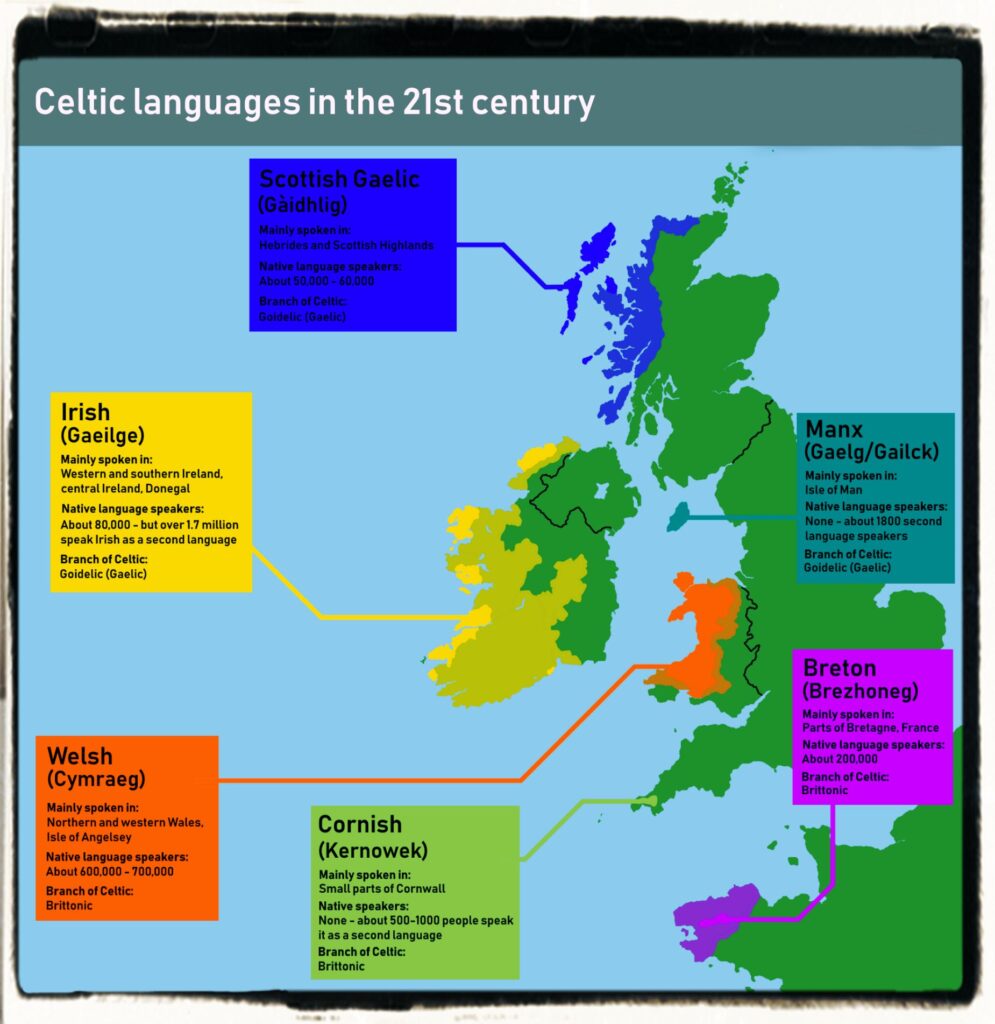
The Breton language is spoken today in various dialects in Brittany; most Breton speakers also speak French. Developed between the 4th and 6th centuries by Welsh and Cornish exiles fleeing invaders, it differs from the Welsh and Cornish of their homelands in its use of nasals and loanwords from the French.
Once the language of Cornwall, Cornish has been extinct since the late 18th century, despite recent efforts to revive it. It survives only in a few proper names and certain words in the English dialect spoken in Cornwall.
Welsh, called Cymraeg or Cymric (from Cymru, “Wales”) by its speakers, is the native language of Wales and the most flourishing of the Celtic languages. It is spoken in Wales (where the majority of its users also speak English) and in some communities in the United States and Argentina. Organizations such as the Society for the Welsh Language have saved the language from dying out and are working to assure its official status along with English. Several schools in Wales now use Welsh as the medium of instruction, and television and radio broadcasts are made in the language.
Like Breton, Welsh has discarded case endings for nouns; verbs, however, are elaborately inflected. The alternation of consonants, called mutation, plays a role, as in all Celtic languages. Welsh spelling is phonemic, representing unambiguously the pertinent sounds. In most cases Welsh speakers will know how to pronounce a word they have never seen before. The letter w can represent either a consonant or a vowel, however, and y stands for two vowel sounds. The consonant f has the sound of English v; ff of f; dd of th, as in then; and th of th, as in thin. Popular attempts to describe pronunciation of double l (ll) all fail. It is a voiceless lateral fricative, and facile comparison to English thl is invalid. Welsh words are accented on the next to last syllable and have a characteristic intonation.
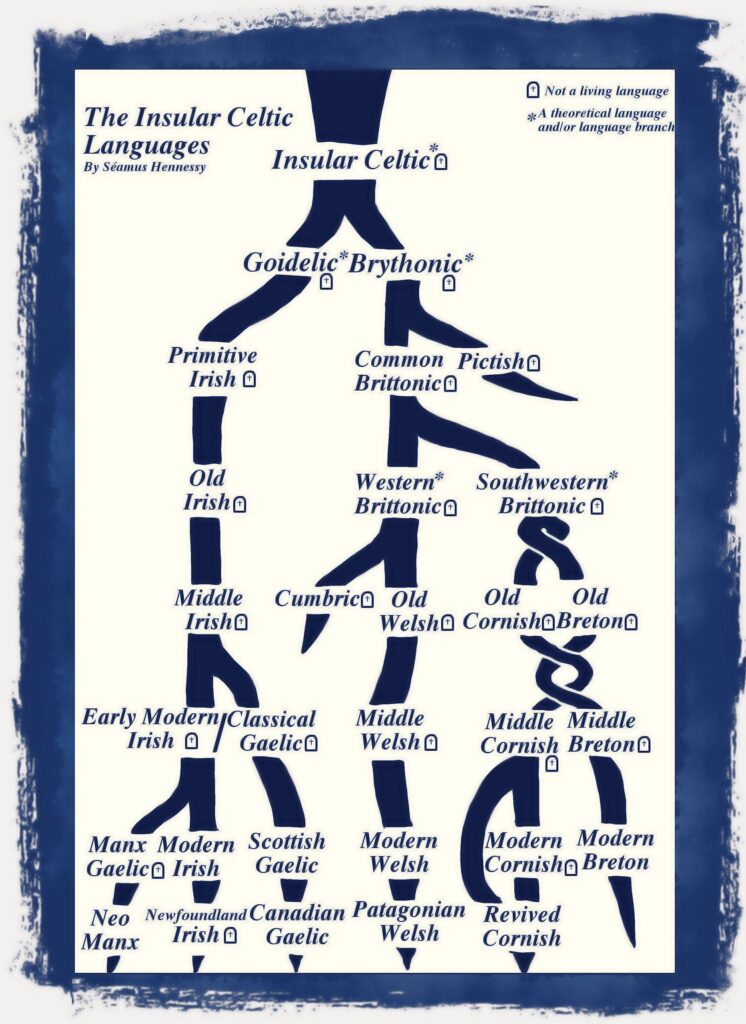
Scholars recognize three periods of Welsh: Old (800-1100), Middle (1100-1500), and Modern (from 1500). Old Welsh survives only in isolated words and names, plus a few lines of verse. Welsh has borrowed words throughout all these periods from Latin, Anglo-Saxon, Norman French, and extensively from English, but it still has a large native vocabulary of Celtic origin. Forty dialects have been identified in Wales. Standard Welsh has both a Northern and Southern variety.
Irish, or Irish Gaelic, is the oldest of the Goidelic group of Celtic languages. Ancient written examples exist in the ogham inscriptions, on about 370 gravestones scattered through southwestern Ireland and Wales. Dating from the 5th to the 8th century, the inscriptions consist almost entirely of proper names. Irish can be grouped into four periods: Old (circa 800-1000), Early or Early Middle (1200-1500), Middle (1200-1500), and Modern (from 1500).
Originally a highly inflected language, Irish retains essentially two noun cases, nominative and genitive, with the dative surviving in the singular of feminine nouns; the language has only two verb tenses in the indicative mood. It is chiefly spoken in the western and southwestern parts of the Republic of Ireland, where it is an official language, and to some extent in Northern Ireland. In the past century, the number of Irish-speaking persons has declined from 50 percent of the population of Ireland to less than 20 percent.
A form of Gaelic was brought to Scotland by Irish invaders about the 5th century, where it replaced an older Brythonic language. By the 15th century, with the accretion of Norse and English loanwords, the Scottish branch differed significantly enough from the Irish to warrant definition as a separate language.
The alphabet of Irish and Scottish Gaelic is identical, consisting of 18 letters. Scottish Gaelic employs four cases of nouns: nominative, genitive, dative, and vocative. Like Irish, the accent is on the initial syllable.
Scottish Gaelic exists in two main dialects, Northern and Southern, roughly geographically determined by a line up the Firth of Lorne to the town of Ballachulish and then across to the Grampian Mountains, which it follows. The Southern dialect is more akin to Irish than is the Northern, and is more inflected. The main difference is the change of the é sound, which is eu in Northern dialect and ia in Southern. Thus, the word for “grass” is pronounced feur in Northern and fiar in Southern. Scottish Gaelic also has a few thousand speakers in Nova Scotia.
The language of the Isle of Man is classed as a dialect of Scottish Gaelic, with strong Norse influence. It began to decline in the 19th century, and in the early 20th century it became virtually extinct. The first written records are of the 17th century, and Manx literature, apart from ballads and carols, is negligible.
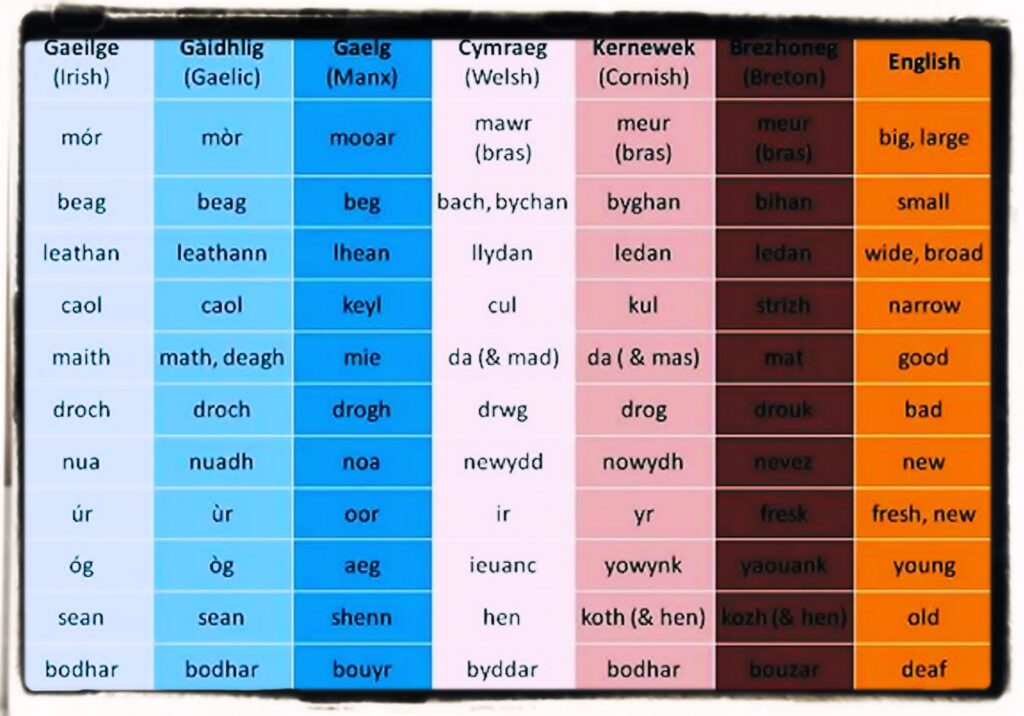
Gaelic vs Celtic
The terms Celtic and Gaelic cause a lot of confusion among many due to how similar they are, and the reason for this similarity is that these two terms are interrelated to each other. The Gaelic language/culture comes under the Celtic branch of languages/groups.
The Celtic culture originated from central Europe, and the group of tribes that come under this culture were called “The Celts”. There were many languages, religions, and tribes that came under this collective group. Traces of the culture can still be found in parts of Europe.
The Gaelic language is one of the few languages that come under the Celtic group of languages. It evidently originated from Scotland and parts of Ireland. The Scottish Gaelic language was the primary language that was spoken in Scotland and few areas/islands surrounding it.
The difference between Gaelic and Celtic is that Gaelic is a language/tribe that originated in Scotland and belonged to the group of Celtic cultures. The Celtic culture encompasses many different traditions and religions and cannot be categorized under one single subculture.
The Celtic culture began to rise in the year 1200 B.C. and first spread around parts of western Europe. The Gaelic Culture/language originated from Ireland and was introduced in Scotland in the 4th century.
To find out more you can also read:
The first thing to point out is that there really isn’t one Celtic language. There are in fact a number of them. The languages that we refer to today as being of Celtic origin are Irish Gaelic, Scottish Gaelic, Manx, Welsh, Breton and Cornish. These six languages are known as the Insular Celtic languages because they originated in what are known as the British Isles.
These 6 living languages of ancient Celtic origin form one branch of the Indo-European family tree and share sounds from other European and Eastern language groups including the languages of Greece and Rome, the Middle East and Germanic and Slavic tongues. (There is another group called the Continental Celtic languages that have not survived.)
These 6 languages can themselves be organized into two branches– the P-Celtic or Brythonic branch and the Q-Celtic or Goidelic branch. The P-Celt and Q-Celt tag comes from a difference in how words evolved from Indo-European. While several words remain common to both sides, on the Q-Celtic side, the hard ‘k’ became prevalent in many words while on the P-Celtic side a ‘p’ sound was more common in the same words. For example the word ‘who’ is derived from the Latin qui. On the Q-Celtic side this evolved as cia and today in Irish Gaelic is cГ©. In P-Celtic it became pwy.
Below is an overview of the two branches of the Celtic languages. I thought it would be interesting to able to compare what the Q-Celtic languages of Irish, Scottish Gaelic and Manx sound like and to contrast them with the sound of the P-Celtic languages of Breton, Welsh and Cornish.
Goidelic (Gaelic) or Q-Celtic Languages
The Gaelic language was spread from Ireland to the Isle of Man and Scotland by migrating groups and raiders sometime from the 3rd Century on. While there are still huge similarities between the languages, they have all evolved in their own way.
Known also as Irish Gaelic or Gaeilge. (In the past and still very occasionally can be called Erse)
Number of Native Speakers: 40-80,000
Everybody attending school in Ireland learns Irish and many profess to speaking the language according to the National Census. Irish is the first official language of the country but the working language for most things is English. Although, the government supports the language in many ways and introduced a Language Act in 2003 to increase the level of public services in Irish, the biggest success in the revival of the gaelic language is the growth of gaelscoileanna which immerse kids in the language and the success and popularity of the TV channel TG4.
(See also The Gaelic Revival for more information on this topic.)
Scottish Gaelic
Known also Gaelic or as GГ idhlig (or sometimes pejoratively as Erse). Gaelic may be pronounced also as Gallic.
Number of Speakers: Approx 100,000
Scottish Gaelic was introduced from Ireland by raiders during the 4th and 5th centuries. Scottish Gaelic is mostly spoken in the Scottish Highlands. It is not to be confused with Scots which is a language/dialect spoken in the Scottish lowlands of Germanic origin and not a Celtic language. Scottish Gaelic has a rich oral and written tradition. While the number of speakers had been falling for a number of years, there is a growing number of young people speaking the language. The Scottish language movement has not been as effective as getting the same level of recognition as Welsh (see below) but this too has been improving since devolution and a Gaelic Language (Scotland) Act was introduced in 2005 to protect the language.
Manx Language
Manx, known also as Gaelg or Gailck, is spoken in the Isle of Man (located in Irish Sea)
Number of Speakers: Approx 2000
Like Cornish, Manx is enjoying a growing interest in recent years. However, the chances of a real revival, though slim are much better than Cornish. Many religious books were translated to Manx, including The Common Book of Prayer, the Bible and other catechisms. This means that the language was better preserved. A primary school teaching through the medium of the Manx has been opened in recent years.
More information on Gaelic Language
You should really have a look at the following pages if you want to get a better sense of the Gaelic Language, and Irish in particular.
Brythonic or P-Celtic Languages
The word Brythonic comes from a Welsh word Brython, which means an indigenous Briton, as opposed to Anglo-Saxon or Gael. The Brythonic languages derived from a British language spoken during the Iron Age. Within Britain several languages developed from this over the centuries including Welsh and Cornish. Breton in Northern France emerged as the Brythonic language was taken there by emigrating Britons.
Welsh Language
Welsh is alsoknown as Cymraeg or y Gymraeg
Approx 600,000 speakers
Welsh is the Celtic language with in the healthiest state. In Wales there has been a real and quite successful effort to restore the language. The number of speakers is actually increasing. Both the teaching of the language to all children under the age of 16 and the popularity of Welsh media channels have helped reverse the decline. The Welsh Language Act of 1993 also ensures that the public can avail of services in English or Welsh.
Breton
Breton is also known also as Brezhoneg.
Spoken in Brittany in North Western France
Number of Speakers: Approx 200,000
Though still a significant number of speakers, the language survives with little official support. If fact the number of speakers has declined from over a million people before the World War II. Unfortunately, most of the speakers are also elderly which means that the language is increasing danger. The French government does not support any schools teaching in any language other than French which has not helped. It refused to incorporate the Breton-language immersion schools (called Diwan) into the public system in the 90’s because the Constitution recognizes only the French language. The regional government in Brittany does provide some financial support, however.
Cornish Language
The Cornish Language is known also as Kernewek.
Approx 2000 speakers
There are ongoing attempts to revive the Cornish language and there are a number of people studying the language. There are a small number of bilingual speakers and Cornish is now recognized under the European Charter for Regional or Minority Languages. The ability of the revival movement to create a real momentum remains in doubt. Without major support, it is hard to see a future for this Celtic language.

